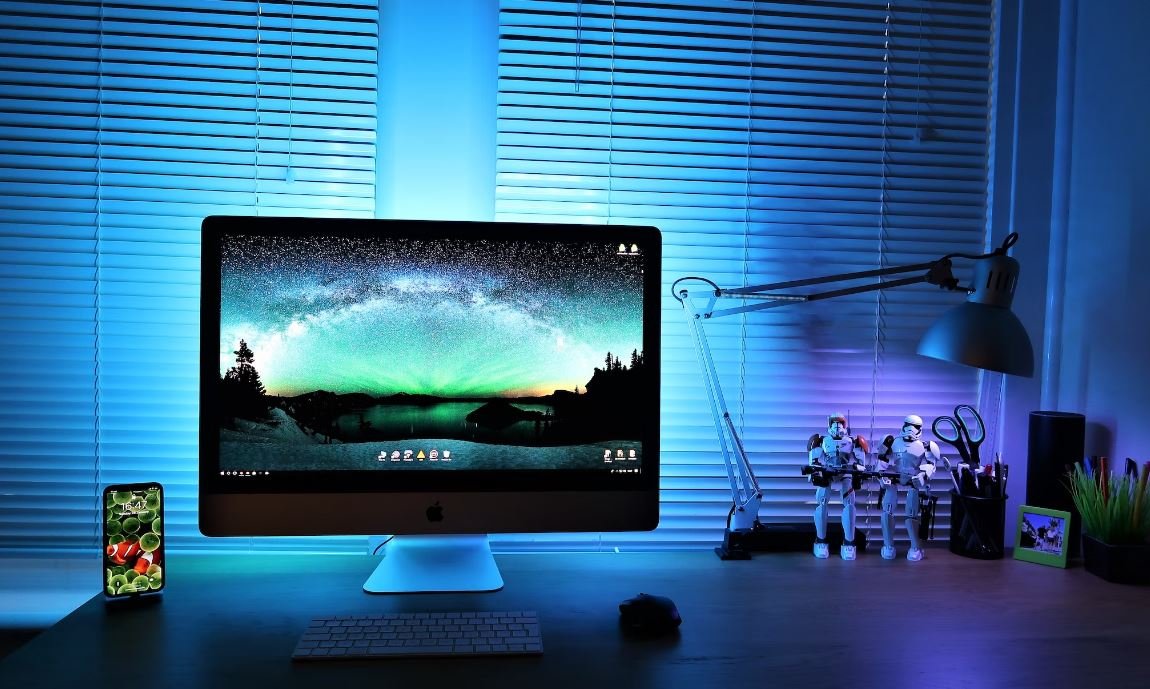Picture Prompts for Writing KS2
Picture prompts are a great tool for inspiring creative writing in KS2 students. They stimulate imagination, encourage storytelling, and provide a visual aid for reluctant writers. This article explores the benefits of using picture prompts in the classroom and provides tips on how to effectively utilize them.
Key Takeaways:
- Picture prompts stimulate imagination and storytelling in KS2 students.
- Visual aids support reluctant writers and enhance their writing skills.
- Effective use of picture prompts can improve students’ creative writing abilities.
The Benefits of Picture Prompts
Picture prompts offer several advantages in the teaching of writing. Firstly, they provide a visual stimulus that helps students generate ideas and imagine different scenarios. *Using vivid and engaging pictures can captivate students’ attention and spark their creativity.* Additionally, picture prompts can help overcome writer’s block by inspiring students to write about what they see in the image.
Secondly, picture prompts support reluctant writers who may struggle to start writing. The visual aid gives them a point of reference and reduces the intimidation factor of a blank page. *Providing a specific picture prompt can help these students feel more confident in expressing their thoughts and ideas.* It also allows them to focus on details within the image, helping them develop their observation and descriptive skills.
Lastly, picture prompts improve students’ writing skills by encouraging storytelling and developing their ability to construct a narrative. *By asking students to interpret and create a story around an image, they learn the elements of storytelling such as character development, plot structure, and descriptive writing.* These skills are essential for effective communication and can be transferred to other writing tasks.
How to Use Picture Prompts Effectively
Here are some tips for using picture prompts in KS2 classrooms:
- Choose images that are relevant to the topic or theme being taught to enhance learning.
- Provide a variety of picture prompts to cater to different interests and learning styles.
- Encourage students to analyze the image before starting to write, noting details, emotions, and possible storylines.
- Allow students to share and discuss their interpretations of the picture, fostering collaboration and critical thinking.
- Use the picture prompt as a starting point, but give students the freedom to take their writing in any direction they choose.
- Provide regular opportunities for students to use picture prompts to strengthen their writing skills.
Examples of Picture Prompt Activities
Table 1 showcases different types of picture prompts and their specific applications:
| Picture Prompt Type | Application |
|---|---|
| Real-Life Photographs | Encourages descriptive writing and connections to personal experiences. |
| Artwork and Illustrations | Fosters imaginative storytelling and creativity. |
| Scenic Landscapes | Promotes descriptive writing and setting development. |
| Historical Images | Inspires historical fiction writing and encourages research. |
Table 2 presents a timeline of picture prompt activities with associated learning objectives:
| Activity | Learning Objectives |
|---|---|
| Picture Prompt Warm-up | Engages students’ creativity and fosters descriptive writing skills. |
| Picture Prompt Story Contest | Promotes storytelling, imagination, and encourages friendly competition. |
| Picture Prompt Journal | Encourages regular writing practice and personal reflection. |
| Picture Prompt Group Activity | Enhances collaboration, critical thinking, and communication skills. |
Table 3 provides a list of online resources for finding picture prompts:
| Website | Description |
|---|---|
| Unsplash | A collection of high-resolution photographs that are free to use. |
| Pobble 365 | A daily picture prompt with accompanying writing tasks and resources for teachers. |
| Storybird | An online platform that provides artwork and illustrations as writing prompts. |
| Library of Congress | An extensive collection of historical images for historical fiction writing. |
Get Creative with Picture Prompts
Picture prompts are a valuable tool for nurturing creativity and improving writing skills in KS2 students. By providing a visual stimulus and encouraging storytelling, they can inspire even the most reluctant writers. So, try incorporating picture prompts into your teaching and watch your students’ writing abilities flourish!

Common Misconceptions
Misconception 1: Picture prompts are only for beginners
One common misconception is that picture prompts are only suitable for beginner-level writers. While picture prompts are indeed a great tool for helping young learners develop their writing skills, they can be equally beneficial for more advanced writers. Advanced writers can use picture prompts to exercise their creative thinking, generate new ideas, and strengthen their descriptive writing skills.
- Picture prompts are not limited to beginners
- Advanced writers can benefit from picture prompts
- Picture prompts can help strengthen descriptive writing skills
Misconception 2: Picture prompts limit creativity
Another misconception is that picture prompts limit creativity by providing a visual guide that restricts the writer’s imagination. However, picture prompts can actually ignite creativity by offering a starting point or a springboard for the writer’s own ideas. They can inspire unique storylines, characters, and settings that the writer may not have imagined without the visual stimulus.
- Picture prompts can spark creativity
- They provide a starting point for unique ideas
- Visual stimulus can enhance the writer’s imagination
Misconception 3: Picture prompts are solely for narrative writing
Many people believe that picture prompts are only meant for narrative writing, such as storytelling. However, picture prompts can be used for various writing genres, including persuasive, descriptive, and even informational writing. The visual element of a picture prompt can help students explore different writing styles, develop arguments, or describe factual information in a more engaging way.
- Picture prompts can be used for multiple writing genres
- They can enhance persuasive and descriptive writing
- Picture prompts can make informational writing more engaging
Misconception 4: Picture prompts are easy shortcuts
Some people may perceive picture prompts as an easy way to avoid thinking critically or creatively about writing. However, creating a well-developed piece of writing based on a picture prompt requires just as much critical thinking and creativity as writing without one. Writers must carefully analyze the visual cues, interpret their meaning, and use their imagination to craft a cohesive and engaging story or argument.
- Picture prompts require critical thinking
- They demand creativity and imagination
- Analyzing visual cues is key to creating a good piece of writing
Misconception 5: Picture prompts are not suitable for older students
Some may believe that picture prompts are only appropriate for younger students and that older students may find them childish or irrelevant. However, picture prompts can be tailored to suit the interests and maturity levels of older students. By selecting more complex or thought-provoking images, educators can challenge older students to think deeply, analyze visual texts, and develop sophisticated written responses.
- Picture prompts can be adjusted for older students
- They can challenge older students to think deeply
- Complex images can be used to engage older students

Prompt 1: Animals in the Rainforest
The rainforest is home to a diverse range of animals. Here is a table showing some of the interesting animals you may encounter in the rainforest.
| Animal | Characteristic | Habitat |
|---|---|---|
| Jaguar | Fastest land animal in the Americas | Tropical rainforests of Central and South America |
| Sloth | Extremely slow-moving | Tropical rainforests of Central and South America |
| Toucan | Distinctive colorful beak | Amazon rainforest in South America |
Prompt 2: Famous Landmarks
Explore some of the world’s most breathtaking landmarks that inspire awe and wonder!
| Landmark | Location | Height/Length |
|---|---|---|
| Eiffel Tower | Paris, France | 324 meters |
| Machu Picchu | Peru | 2,430 meters above sea level |
| Great Wall of China | China | 21,196 kilometers |
Prompt 3: Planets in Our Solar System
Travel through space and discover the fascinating worlds that exist beyond Earth.
| Planet | Diameter (km) | Distance from Sun (million km) |
|---|---|---|
| Mercury | 4,879 | 57.9 |
| Venus | 12,104 | 108.2 |
| Mars | 6,779 | 227.9 |
Prompt 4: World Heritage Sites
Embark on a journey to explore the breathtaking UNESCO World Heritage Sites found across the globe.
| Site | Location | Year of Inscription |
|---|---|---|
| Machu Picchu | Peru | 1983 |
| Taj Mahal | Agra, India | 1983 |
| Great Barrier Reef | Australia | 1981 |
Prompt 5: Human Body Systems
Explore the intricacies of the human body and how its systems work together to maintain functionality.
| System | Main Organs | Function |
|---|---|---|
| Respiratory System | Lungs | Exchange oxygen and carbon dioxide |
| Digestive System | Stomach, intestines | Break down and absorb nutrients |
| Nervous System | Brain, spinal cord | Coordinate body functions, transmit signals |
Prompt 6: Famous Artists and Their Masterpieces
Delve into the world of art and admire the brilliant works of renowned artists.
| Artist | Nationality | Famous Masterpiece |
|---|---|---|
| Leonardo da Vinci | Italian | Mona Lisa |
| Pablo Picasso | Spanish | Guernica |
| Vincent van Gogh | Dutch | The Starry Night |
Prompt 7: Endangered Species
Learn about some of the amazing animals that are at risk of extinction.
| Species | Status | Location |
|---|---|---|
| Amur Leopard | Critically Endangered | Russia, China |
| Giant Panda | Endangered | China |
| Sumatran Orangutan | Critically Endangered | Sumatra, Indonesia |
Prompt 8: World Currencies
Discover the various currencies used around the world with their exchange rates.
| Currency | Country/Region | Exchange Rate to USD |
|---|---|---|
| Euro | European Union | 1.22 |
| Pound Sterling | United Kingdom | 1.36 |
| Japanese Yen | Japan | 0.0091 |
Prompt 9: Prehistoric Dinosaurs
Take a step back in time and uncover some of the fascinating dinosaurs that roamed the Earth millions of years ago.
| Dinosaur | Period | Length (m) |
|---|---|---|
| Tyrannosaurus Rex | Late Cretaceous | 12.3 |
| Velociraptor | Early Cretaceous | 1.8 |
| Triceratops | Late Cretaceous | 9 |
Prompt 10: Music Genres
Immerse yourself in the world of music by exploring different genres and their notable characteristics.
| Genre | Origin | Main Instruments |
|---|---|---|
| Rock | United States | Guitar, drums, bass |
| Jazz | United States | Piano, saxophone, drums |
| Reggae | Jamaica | Electric guitar, bass, drums |
From the mesmerizing wildlife of the rainforest to the vastness of the solar system, exploring these topics provides endless writing inspiration. Whether you find inspiration in the wonders of nature or the achievements of human civilization, picture prompts like these can help ignite your imagination and bring your writing to life.
As you embark on your writing journey, remember to let your creativity soar while drawing from the incredible knowledge and facts that surround us. By observing the world with a curiosity-filled perspective, you can create compelling stories and share them with others.
Frequently Asked Questions
What are picture prompts for writing?
Picture prompts for writing are images that are used to inspire and stimulate creative writing. They can be photographs, drawings, or any other visual representation that can spark ideas for writing stories, poems, or essays.
How can picture prompts help improve writing skills in KS2?
Picture prompts engage children’s imagination and encourage them to think critically, develop a story plot, describe characters and settings, and expand their vocabulary. They promote creativity, improve communication skills, and enhance the overall quality of their writing.
Where can I find picture prompts for writing?
Picture prompts can be found in various places such as books, online resources, educational websites, and writing activity cards specifically designed for KS2 students. They are also commonly used by teachers during writing lessons.
Can picture prompts be used for different types of writing tasks?
Absolutely! Picture prompts can be used for a wide range of writing tasks including narrative writing, descriptive writing, persuasive writing, and even poetry. The visual stimulus provided by the picture can inspire different genres and writing styles.
How should picture prompts be introduced to children?
The introduction to picture prompts should involve allowing children some time to closely observe the image and encourage them to think about what they see, feel, or imagine. Teachers can then guide discussions to elicit ideas, storylines, and unique perspectives from the students.
What are some effective strategies to get children started with writing using picture prompts?
The following strategies are commonly used to help children start writing using picture prompts:
- Encourage brainstorming and mind mapping.
- Promote discussion and sharing ideas in pairs or small groups.
- Provide sentence starters or story prompts based on the image.
- Focus on sensory details and descriptive language.
- Model the writing process by sharing your own written piece based on the picture prompt.
Are there any specific writing techniques that can be practiced with picture prompts?
Yes, picture prompts provide an excellent opportunity to practice various writing techniques such as:
- Character development
- Setting description
- Plot development
- Dialogue writing
- Suspense building
- Metaphor and simile usage
Can picture prompts be used for individual writing as well as group activities?
Definitely! Picture prompts can be used for both individual writing tasks and group activities. They can be an effective tool for independent creativity as well as collaborative writing exercises.
Are picture prompts suitable for children of different ability levels?
Yes, picture prompts can be adapted to cater to the diverse abilities of children. Teachers can provide additional support for struggling writers, while also challenging more advanced students with more complex creative writing tasks.
How can teachers assess children’s writing using picture prompts?
Teachers can assess children’s writing using picture prompts by evaluating their ability to:
- Develop a coherent and engaging storyline
- Use appropriate vocabulary and language features
- Organize their ideas effectively
- Demonstrate creativity and originality
- Apply writing techniques discussed in class




